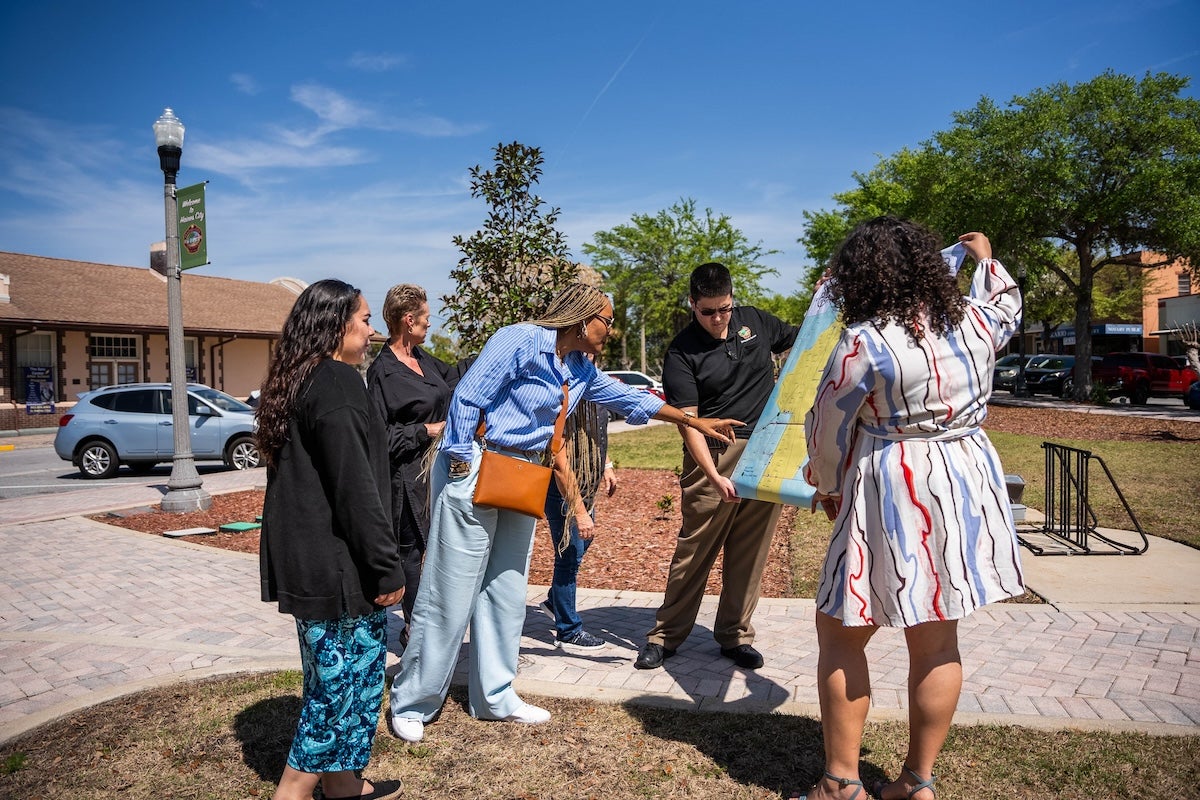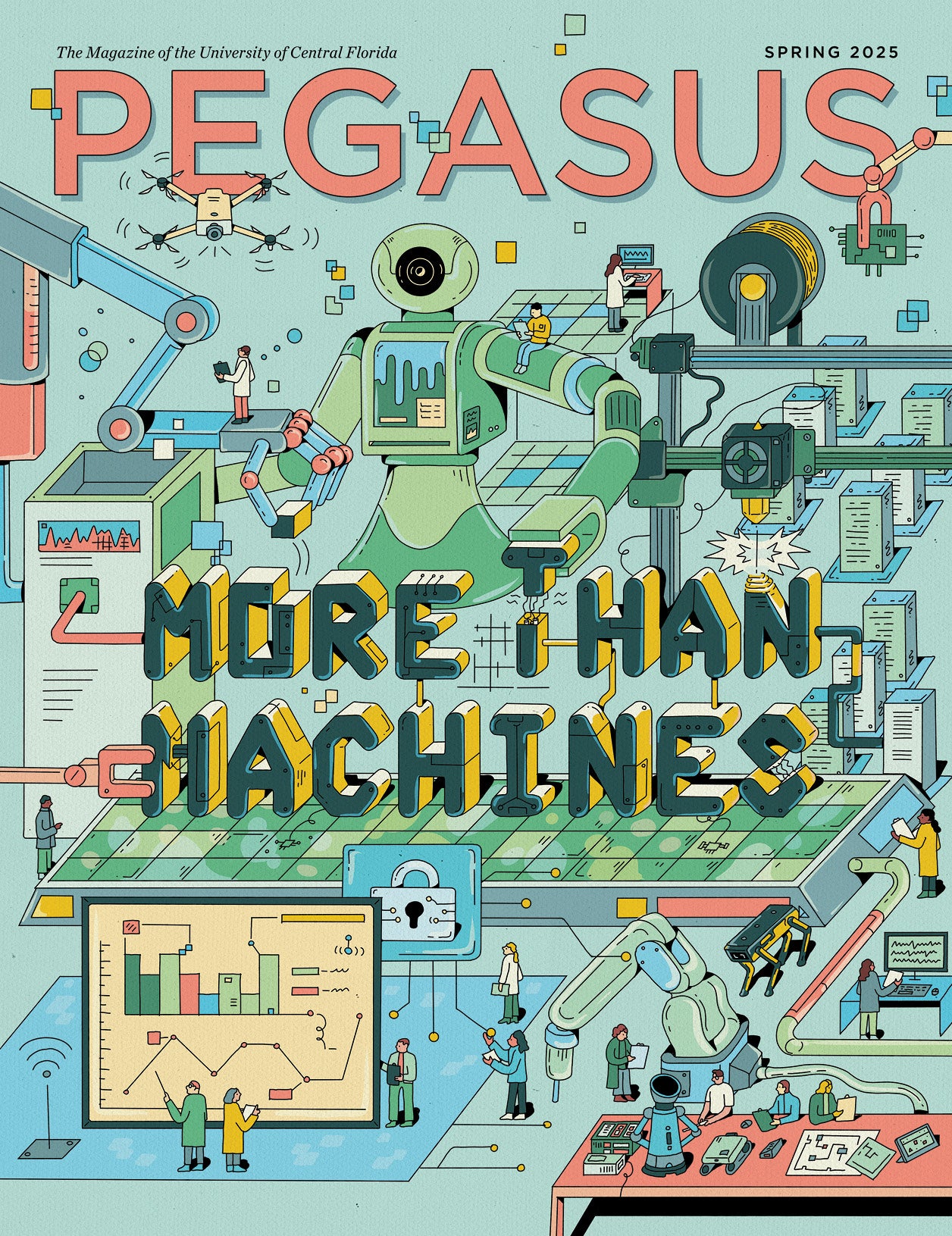Haines City officials recently provided students in the urban and regional planning master’s program with an invaluable opportunity for collaboration — one that will also have a lasting impact on the rapidly growing Central Florida city for years to come.
With the area currently undergoing a population boom with more residential and commercial developments on the horizon, Haines City’s Community Redevelopment Agency (CRA) was seeking assistance with creating a new master plan. After reaching out to UCF’s urban and regional planning faculty for help, a partnership opportunity was born.
From there, the project became a part of the program’s two-semester capstone class that intertwines class work with real community improvement projects. Their task for this past academic year was assisting Haines City in developing a new CRA master plan.
Professor Christopher Hawkins, lecturer Scott Noh and Associate Professor Chia-Yuan Yu were the driving forces of the project on UCF’s end, with Noh teaching the capstone classes, Hawkins facilitating the collaboration and Yu’s transportation class contributing research.
The master plan the students worked on covers transportation and circulation elements, recreation, open space, housing, economic development and more for a specific target area, Hawkins says. The students focused on two-and-a-half census tracts in the heart of Haines City’s community redevelopment area.
“It provided a really great opportunity to integrate students into creating a deliverable for a community in Central Florida that the city requested,” Hawkins says. “It is a little different than how we’ve typically developed a partnership, where we would look for partners who may have a need and we negotiate the scope of services, but that may not necessarily translate into the city adopting what we produce.”
The students also had the opportunity to travel to Haines City multiple times to do field work, including hosting a public forum to talk with residents, which was attended by the city’s former mayor, vice mayor and city commissioners.
They presented their design recommendations at the public forum, which centered on creating a more transit-oriented downtown area in Haines City, Noh says. The Transit-oriented Development model the students utilized focuses on creating urban spaces designed to maximize the amount of residential, business and leisure spaces within walking distance of public transportation.
“It’s eye-opening for the students to attend these meetings,” Hawkins says. “It allows them to hone their communication skills, because many students don’t have much experience speaking with elected officials or professional planners, so this provides an opportunity for them to practice those skills and attend city government meetings that otherwise, they may not be exposed to until they’re a graduate and are on the job market.
In past years, the class has offered its services to local municipalities, including Apopka and Casselberry, with the hope that officials may take some of the student recommendations into consideration. In this case, the faculty have a formal partnership with Haines City and will be submitting a final report, which includes the findings from the students, to the city by November 2024.
The broad scope of the project also allowed students to pick their areas of interest to work on for the class, such as transportation, environmental components or housing.
Recent graduate Calvin Clarke ’24MS chose to work on the transportation aspects of the plan, knowing that heavy traffic is a big concern in the growing area. This was something he was highly aware of as he was coincidentally already a city planner for Haines City before he entered the master’s program.
“In Fall 2023 when we started the project, I just happened to be in class and saw on the syllabus that we were working with Haines City,” Clarke says. “That immediately got me excited to work a lot on this project.”
One part of the class Clarke enjoyed that set it apart from what he does at work daily was meeting with some residents of Haines City to hear their opinions on the redevelopment area and for the students to get feedback on their proposed ideas.
“Specifically for the class, it was enlightening because some of the ideas we had may or may not have resonated with the citizens, like an idea for revamping a particular area of the city that would have necessitated the removal of an existing shopping plaza,” Clarke says. “Some ideas may not have been favorable in the eyes of some of the citizens, but others were. That was definitely eye-opening for me and some of my other classmates, as well.”
Noh says this class was also invaluable for the experience students gained by working with the general public.
“Urban planning is applied science,” Noh says. “That means we don’t do some sort of experiment in the lab or just in the classroom. We learn lots of things from different perspectives. With things like transportation, office space and land use, students need some experience with them to synthesize their learning experience. So, the capstone class is a good opportunity for the students to learn how to apply the skills they learned throughout the semester.”




